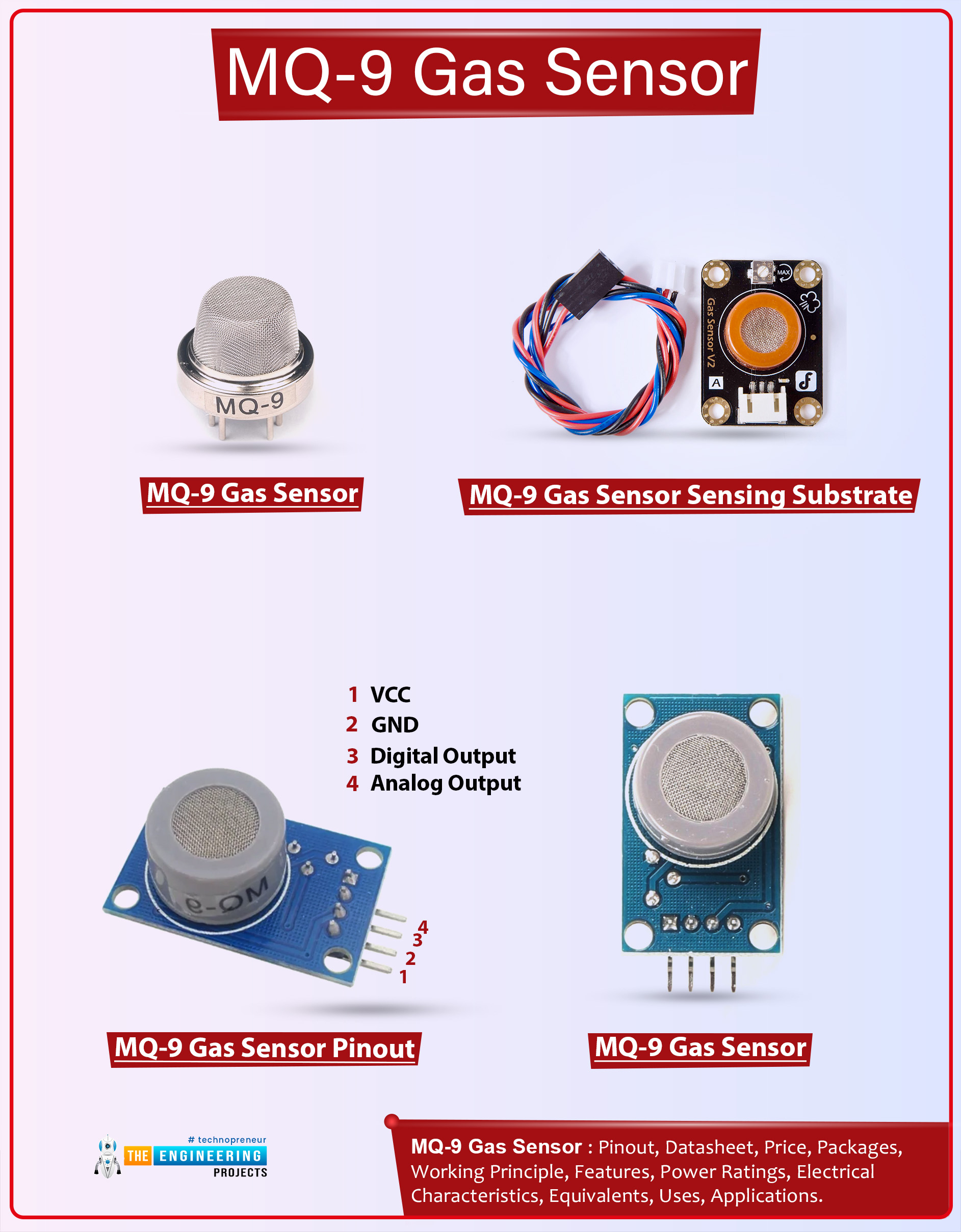
Hi seekers! Welcome to another article discussing a sensor from the MQ gas sensor series. Today, we are discussing the MQ-9 gas sensor, which can detect gases like carbon monoxide, CH4, and LPG. It has a long life and a simple structure, and the heart of this gas sensor is the sensing element on the heating circuit. Usually, such sensors are part of large projects where they sense the target gas and send a signal for any alarming condition.
We’ll begin the discussion with the basic introduction of this sensor in which we’ll discuss the basic parts and their duties. After that, we’ll move towards the datasheet elements and study this sensor's features, specifications, and other details. You will also see its working principles and diagrams to understand the concept. In the end, there will be a glance at the applications in which the MQ-8 gas sensor plays a vital role. Let’s hover over today’s first topic:
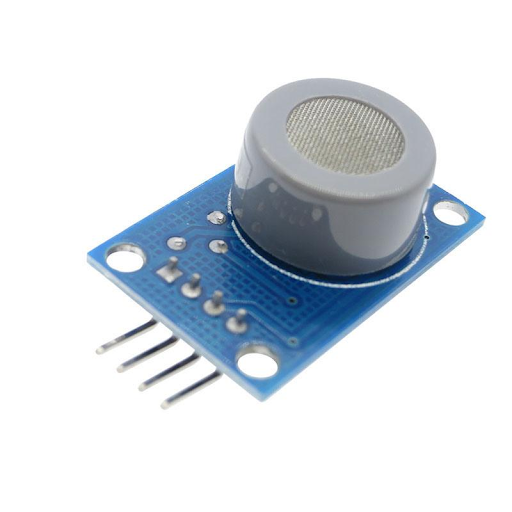
MQ-9 Gas Sensor Introduction
The MQ-9 gas sensor belongs to the MQ series, which has multiple sensors specialised for a particular gas. In the case of the MQ-9 gas sensor, the target gases are methane, propane, and other combustible gases that may be life-threatening if leaked. As the ambient concentration of target gases rises, the sensor diligently absorbs them at a higher rate, conveying their presence through analogue values at its analogue pin.

Let's focus on the fundamental components of this sophisticated sensor, unravelling its intricacies for a comprehensive understanding:
MQ-9 Gas Sensor Sensing Substrate
A ceramic material is present on the core of the MQ-9 base. It is usually alumina (Al2O3) that is responsible for providing the mechanical strength to the sensing element. The reason to use alumina is its high thermal stability and electrical resistance so that it does not provide any interference in the sensor’s values.
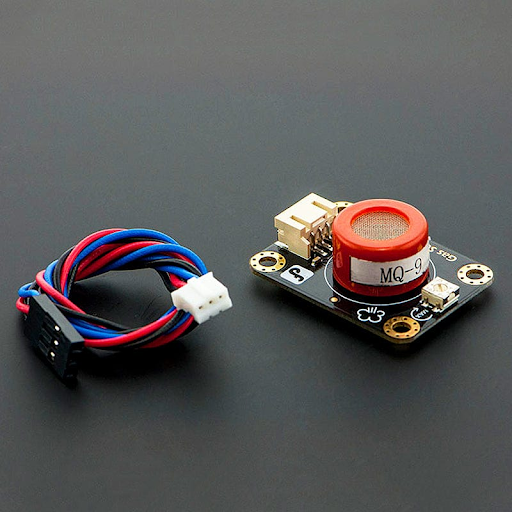
MQ-9 Gas Sensor Sensing Element
The heart of this sensor is the sensing element that absorbs the target gas and senses its presence. It is a small, cylindrical-shaped structure made with tin oxide (SnO2). It is wrapped around the ceramic material in the form of a uniform layer.
MQ-9 Gas Sensor Heater Circuit
As mentioned before, the small heating circuit is present under the sensing element. It is a coil made of nichrome wire embedded within the substrate of ceramic material. This can heat the sensing element to around 300°C. This heat starts the work of the whole sensor.
MQ-9 Gas Sensor Electrodes
The ceramic substrate has metallic contacts on both sides that are responsible for the interface between the sensing element and the circuit. These electrodes also allow electrical current to pass through the sensing element to create a change in the electrical conductance, and this is the basic way to sense the presence of gas.
MQ-9 Gas Sensor Datasheet
Prior to the utilization of any electrical component, it is important to peruse the datasheet that outlines the product's intricate details. Presented below are fundamental considerations essential for an informed deployment of the MQ-9 gas sensor.
MQ-9 Gas Sensor Features
One of the unique features of the MQ-9 that makes it different from other MQ series elements is its wide range of gas detection. It is not specialised for a single gas but can detect multiple gases, which makes it a versatile sensor. The list of detectable gases for this sensor is given below:
Methane (CH4)
Propane (C3H8)
Liquefied petroleum gas (LPG)
Carbon monoxide (CO)
It is a more versatile and cost-effective gas sensor and, therefore, is preferred in fields like industries and home safety.
It has a simple structure that consumes fewer resources.
It has a fast response time that allows prompt warnings and measures.
It has a compact and portable design that makes it suitable for different circuits.
MQ-9 Gas Sensor Specifications
The following table shows the basic specifications of this sensor:
Feature |
Specification |
Model No. |
MQ-9 |
Sensor Type |
Semiconductor |
Standard Encapsulation |
Bakelite |
Detection Gas |
CO and combustible gas |
Concentration |
10-1000ppm CO, 100-10000ppm combustible gas |
Loop Voltage Vc |
≤10V DC |
Heater Voltage VH |
5.0V±0.2V ACorDC (High), 1.5V±0.1V ACorDC (Low) |
Heater Time TL |
60±1S (High), 90±1S (Low) |
Circuit Load Resistance RL |
Adjustable |
Heater Resistance RH |
31Ω±3Ω (Room Temp.) |
Heater consumption PH |
≤350mW |
Sensing Resistance Rs |
2KΩ-20KΩ (in 100ppm CO) |
Sensitivity S |
Rs(in air)/Rs(100ppm CO)≥5 |
Character Slope α |
≤0.6(R300ppm/R100ppm CO) |
Tem. Humidity |
20℃±2℃; 65%±5%RH |
Standard test circuit Vc |
5.0V±0.1V; VH (High): 5.0V±0.1V; VH (Low): 1.5V±0.1V |
Condition Preheat time |
Over 48 hours |
MQ-9 Gas Sensor Sensitivity Character
As mentioned before, the MQ-9 can detect multiple gases, but it is important to understand that the response time and sensitivity of this sensor are different for all of these. These factors depend on the chemical reaction between the sensing element and the target gas, and here is a comparison of the performance of the MQ-9 gas sensor with different gases in the form of a graph:
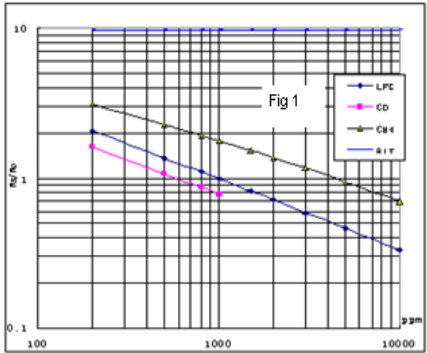
MQ-9 Gas Sensor Basic Circuit
The MQ-9 gas sensor has a simple and easy-to-understand circuit. Here is the diagram that shows the test loop of this device with the help of basic labels:
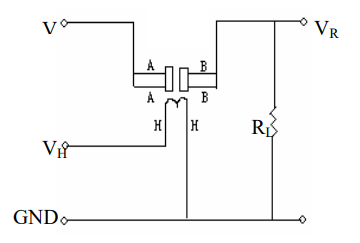
Here,
VH = Heater voltage
Vc = Test voltage
VRL = Voltage on load resistance
RL = Load resistance
If you want to know more about the datasheet or want to study it in detail, then you can visit the following link:
MQ-9 Gas Sensor Pinout Configuration
The MQ-9 gas sensor has four pins. The description and details of each of them are mentioned below:
Pin |
Name |
Description |
1 |
Vcc |
It is a power supply pin for the heater element. It usually requires 5V DC. |
2 |
GND |
It's the ground connection pin. |
3 |
Aout |
It is the analogue output pin. The voltage on this pin varies depending on the gas concentration detected by the sensor, which means a higher voltage indicates a higher gas concentration. |
4 |
Dout (optional) |
It is a digital output pin (present on some models). Provides a binary signal (high or low) based on a pre-set threshold for gas concentration. |
MQ-9 Gas Sensor Alternatives
Here is a list of the alternative options that can be used in place of MQ-9. The performance of these sensors is not identical to that of the MQ-9 but experts may use them in some projects:
Figaro TGS series
Sensirion SGP series
Amphenol SGX series
GasSense IR series
PerkinElmer NDIR-1 series
Where to Buy MQ-9 Gas Sensor
The electrical components, such as MQ-9 have a sensitive structure; therefore, always choose the best product from the best platforms for quality results. The following are some popular choices for such elements:
eBay
AliExpress
Amazon
MQ-9 Gas Sensor Working Principle
The working principle of this sensor is similar to that of other MQ series sensors. It works on the chemiresistor working principle, which means the change in the electrical resistance of the sensing element results in the output values of this sensor. Here are the steps that will explain the previous statement:
MQ-9 Gas Sensor Substrate Heating
As soon as the sensor is powered on, the heating circuit starts increasing the substrate (alumina) temperature. The internal coil of the substrate heats it, and this change is uniformly distributed to the cylindrical shapes sensing element.

MQ-9 Gas Sensor Depletion Region
The heated substrate maintains a temperature of 300 °C, and it stimulates the tin oxide to absorb the oxygen from the surroundings. Soon, the hydrogen ions start accumulating on its surface, and as a result, a depletion region is formed around the sensing element that increases the electrical conductivity of tin oxide.
MQ-9 Gas Sensor Gas Absorption
The depletion region remains on the surface of tin oxide in the air until there is no target gas mixed in it. If any of the target gases are leaked into the air, they start reacting with the depletion region around the sensing element. This reaction results in the absorption of the depletion region. As a result, the electrical conductivity of the tin oxide increases as the sensor indicates this change in resistance through the analogue pin. In other words, the values of the electrical resistance are always present on the analogue pin, but sudden changes in the resistance are alarming on the analogue pin. The higher the target gas concentration, the more sudden and large changes are seen on the analogue pin.
MQ-9 Gas Sensor Gas Digital Value
The digital values show the presence or absence of the target gas without indicating its concentration. The digital pin shows only two outputs as mentioned in the pin description.
The signals from the digital and analogue pins are sent to the output device that indicates the results.
MQ-9 Gas Sensor Physical Dimensions
The MQ-9 gas sensor does not have multiple packages. The size and dimension may vary from model to model, but usually, it is a compact product that can be used in different types of circuits. Here is the table that shows the general package dimensions of this sensor:
Dimension |
Value |
Units |
Diameter |
18 |
mm |
Height (excluding pins) |
17 |
mm |
Pin height |
6 |
mm |
Total height (including pins) |
23 |
mm |
Approximate pin spacing |
2.5 |
mm |
Weight |
5 |
grams |
MQ-9 Gas Sensor Applications
The MQ-9 gas sensor finds extensive application in various projects, catering to significant domains. Below are key sectors where its utilization proves pivotal:
Home Safety
Industrial monitoring
Environmental monitoring
Portable gas detectors
DIY projects (Air quality monitoring systems, smart home gas leak alarms, educational experiments)
Today, we have seen detailed information about the MQ-9 gas sensor. It is a versatile sensor that provides the sensing of multiple gases at a time. We commenced our exploration with a comprehensive introduction to the MQ-9 gas sensor. Progressing further, we moved towards the datasheet, unravelling its distinctive features and specifications. An in-depth exploration of the sensor's operational principles ensued. Finally, we comprehended its physical dimensions and explored the diverse spectrum of applications it caters to. I hope it was an informative article for you, and if you want to know more, you can contact us.



